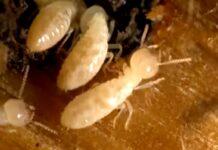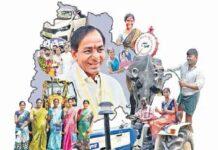The unpredictability of COVID-19 and the desperation for a vaccine are boons for pharma companies, natural-food manufacturers and plant-based nutrition products whose consumers are in panic.
Since the virus was affecting weakened immune systems more, the obvious answer must have been, why not make a drug that contains Ayurvedic ingredients such as ashwagandha, giloy, tulsi and rudanti, and throw in a few minerals? The result was Coronil.
Ramdev called it a breakthrough and claimed that successful clinical trials were conducted on 15-65-year-olds affected by the virus who were cured by the medicine. Soon Patanjali walked a few steps back, saying that it had never claimed that Coronil was a cure against Covid-19 but it was an effective immunity booster against the virus.
The ‘Coronil Kit’ now comes with the tag line, ‘Covid-19 Immunity Booster Kit.’ The Madras High Court recently rapped the company’s knuckles for “exploiting the fear and panic among the general public by projecting a cure for the coronavirus,” and fined it Rs 10 lakh. As for the kit itself, it has been a smash hit. Patanjali claimed that it was selling over 10 lakh kits per day, each priced at Rs 545.
Immunity is the holy grail of the Covid-19 age, which some medical scientists predict will last two or more years, or perhaps forever, hibernating like a beast of prey until some act of nature wakens it to strike again.
The pharma companies aren’t complaining. The immunology drugs market is projected to grow from $65.1 billion in 2016 to $113 billion in 2023, at a compound annual growth rate (CAGR) of 8.2 percent.
The body’s only defence against a virus and other pathogens is the immune system, the most complex network of cells and molecules outside our brain.
They deal with viral intrusions as shapechangers, warriors, honey traps and provocateurs, and even produce calm. The medical world has never seen a virus so complicated as the current coronavirus nicknamed SARS-CoV-2. It is sly, changes form and acts unpredictably across neural systems, age and geography.
On the immunity battleground
Immunity is of two types—the innate and the adaptive. Innate immunity is dependent on a person’s genetic constitution, which he or she has inherited from their parents. Imagine the body as a battlefield and the body’s airways as the scene of the first attack.
The innate immune system contains white blood cell soldiers called B-cells, which are the first line of defence. The body’s intelligence system kicks in when it senses enemy molecules and launches proteins called cytokines.
They activate the B-cells to engulf, digest and launch a barrage of chemical warfare, which incidentally releases more cytokines. Inferons interfere with the replication of viruses. The result—inflammation that proves the innate system is working. But SARS-CoV-2 is a resilient enemy.
The problem with System 1 is that it goes for broad-based attacks while this requires specific areas to target.
The adaptive (or acquired) system goes into action mode. The sleeper network of chemicals and proteins alerts the T-cells, which have antibodies of the specific size and shape of the virus. These cells are specialists with different skills.
Each one is like a laser-guided torpedo with different receptors on its surface that recognise specific antigens. The missiles are released in the form of antibodies, which bind to a specific antigen, putting the virus in its crosshairs. The virus’s armour is accurately neutralised.
 Immunity is not bulletproof
Immunity is not bulletproof
It’s a perfect war plan. Then what’s going wrong with the immune system’s anti-Covid battle plan? Its time and memory.
Once the virus is demolished, most of the mobilised warrior cells back off and die. Except for a tiny fraction of commandos who stay back in the vital organs and patrol the bloodstream.
These seasoned soldiers rely on memory and counter-attack a fresh raid immediately because they remember what to do.
The difference is that Covid is a guerilla. It delays the relaunch of the commandos by stopping the production of interferons—molecules that block viral replication in the first stage.
This delay gives the invading virus a small time window for it to multiply its population unnoticed before the trip wires aren’t activated. These delays have a multiplier effect causing both innate and adaptive sections to lag behind.
Different persons, regardless of age or health, respond differently to the virus. Since coronavirus affects the respiratory tract initially, one patient could’ve inhaled a large dose of it in the beginning unlike another.
Their innate immune system could’ve weakened by old age or chronic illness. Sometimes the levels of T-cells start diminishing. All these open the gates to the lungs, kidneys, blood vessels, and the gastrointestinal and nervous systems. The immune system doesn’t stop working, which causes a serious backlash.
It’s designed to explode with maximum force, and destroy cells and release harmful chemicals to kill invaders. But when the virus escalates its offensive, the immune system will react equally furiously, thereby causing collateral damage to the body.
This protracted uncontrolled violence could kill people who are already cured. The immune system is engineered to counter three broad groups of pathogens: viruses and microbes that infect cells, bacteria and fungi clinging on outside cells, and parasitic worms.
Each group has proprietary cells and molecules which will be activated during an invasion. Covid-19 being virus-caused, only the first should be switched on.
But all three are activated in serious cases, because the immune system has gone amok. Doctors call it cytokine storm—“a hyper inflammation caused by the body’s immune chemicals in response to certain infections like Covid-19 when the immune system has unpredictably gone awry. This is happening even in persons who are otherwise healthy. This hyperactive immune system as a reaction to Covid-19 has, in fact, led to many deaths during the pandemic.”
Dr Aviral Roy, Consultant, Critical Care, Medica Superspecialty Hospital, Kolkata, calls our immune response a “very delicately balanced and beautiful system.”
Any imbalance can cause havoc in the body and lead to complications like multi-organ failures seen in Covid-19-infected patients. “It’s such a new virus that our immune systems haven’t learned how to deal with it,” says Dr Roy, while asserting that 80 percent of people have immune systems that know exactly what to do.
“Taking immune-boosting foods is unlikely to alter this response by the body,” says Dr V Ramana Dhara, professor at the Indian Institute of Public Health, Hyderabad, and infectious diseases expert.
In other words, human immune systems are well-equipped or sometimes, too well-equipped to our own detriment. Says Dr Surya Kant, Professor and Head, Department of Respiratory Medicine, KGMU, Lucknow, “Our immune system is designed to fight external agents, but can be compromised.”
 Market is booming
Market is booming
The unpredictability of SARS-CoV-2 and the desperation for a vaccine are boons for pharma companies, natural-food manufacturers and plant-based nutrition products whose consumers, both at home and work, are in a panic. Immunity is their new playground and immune boosters, both natural and processed, are in huge demand. Says Mohit Malhotra, CEO of a top natural health products manufacturer, “There’s a strong surge in demand for chyavanprash, honey and giloy tablets, among other things. The first quarter of 2020-21 saw a nearly seven-fold growth in demand for chyavanprash and an over 60 percent surge in demand for honey.
This is despite April being a complete washout.” The company has expanded its capacity recently since it claims medical stores are out of stock. Ayurveda-based preventive healthcare and hygiene are gaining prominence in the consumer mind-space.
“People are now more inclined to prophylactic health remedies, especially immunity-boosting products. This trend would sustain, going forward,” adds Malhotra. People are exploring novel foods and supplements to strengthen their immune system as never before. Rajasthan’s camel milk manufacturers are a happy lot. Their claims that the milk contains elements to fight diabetes, improve blood circulation, and yes, provide immunity are perhaps being taken seriously.
A Rajasthan-based company has seen a surge in demand for the milk by 30 percent over the last three months. “Our raw camel milk powder and flavoured camel milk powder have been getting an overwhelming response from cities, particularly Mumbai, Bengaluru, and Delhi after Covid,” says Shrey Kumar, co-founder of the company.
The demand for plant-based nutrition food has grown too. “It improves gut health and therefore you’re better equipped to absorb nutrients that support the immune system,” says Aarti Gill, co-founder of a plant-based nutrition product manufacturer. To keep the immune system balanced and harmonious, gut health is crucial. Over 70 percent of immune system cells are connected to the digestive tract. Intestines contain around 10 times more microorganisms than human cells in the entire body.
This balance will boost the strength of intestinal microflora to ward off harmful bacteria. Gill says immunity-boosting products that contain elderberry, guduchi (giloy), plant Vitamin C and plant protein have gained over 100 percent popularity in the last few months. Bottled water brands have dived into the immunity pool too.
One such company claims its bottled alkaline water is black in colour because it contains more than 70 minerals, sourced from the “depths of the Earth”, is 100 percent natural, provides superior hydration and better detoxification, and reduces acidity throughout the day. The company’s co-founder Aakash Vaghela claims the demand for his water is up by nearly 20 percent in the last four months.
“Overseeing the current pandemic situation and immunity concerns of consumers we’re receiving queries and orders on a regular basis from across the country from all age groups, with metros and tier-1 cities contributing to about 70 percent of the orders,” he says. For Amit Agarwal, 38, a Delhi-based banking professional and his family of three, kaadha (an Ayurvedic concoction of tulsi, ginger, jaggery, cardamom and other ingredients) is a must, every day. “I feel this is what has kept my family safe from the coronavirus,” he says. After the pandemic, he has become a regular consumer of supplements such as chyavanprash and multi-vitamins.
Dr Dhara isn’t surprised at this rush for anything that is an immunity enhancer. “In the absence of a specific treatment for Covid-19, this is natural. It’s people’s way of allaying anxiety about this unknown and changing disease,” says he. According to the India Brand Equity Foundation, Indian pharma companies supply over 80 percent of the antiretroviral drugs to combat AIDS. Pharmaceutical exports from India that include bulk drugs, intermediates, drug formulations, biologicals, Ayush and herbal products, and surgical products stood at $20.70 billion in FY20. India’s domestic pharmaceutical market itself was worth Rs 1.4 lakh crore in 2019, up from Rs 129,015 crore in 2018.
Return to roots but be careful
It is not just families that are closely monitoring eating habits and incorporating ‘healthy’ and ‘immunity boosting’ foods in daily diet. Sandipan Mitra, co-founder and CEO, HungerBox, India’s leading institutional food technology company, knows that corporates are asking for immunity-boosting food to be served in cafeterias.
“The pandemic has forced us to turn towards our traditions and roots. For example, amla rice has become extremely popular since amla is considered to possess immunity-enhancing properties. Citrus-based foods such as lemon and coriander soup are in demand,” Mitra says. Office cafeteria counters have changed with anti-inflammatory juice, ginger peanut curry, beetroot juice, etc finding space over poori aloo and fried rice.
Nutritionists, immunologists and internal medicine experts understand the race to gain the extra edge with immunity boosters to prevent SARS-CoV-2 attacks.
But they feel this demand may not be based on scientific evidence. The Indian dietary supplements market is expected to reach $4 billion by 2020.
Kinita Kadakia Patel, well-known sports nutritionist, and health management professional, thinks that immunity products are useful only in case of an existing deficiency of a certain vitamin or mineral. These should be taken keeping in mind age, gender and body’s needs.
“Even during this pandemic, consuming multiple immunity-boosting products in a single day doesn’t improve immunity overnight. Building immunity is a process and takes time,” says Patel. Stop popping those multivitamin tablets indiscriminately.
Dr Kant is of the opinion that while combining vitamin B complex, C, D along with Zinc is recommended to boost immunity among high-risk groups, they should be taken only after consulting the doctor and bought from reputed pharma companies. A 2015 study released by Assocham-RNCOS concluded that 60-70 percent of dietary supplements sold across India are fake, counterfeit, unregistered and unapproved.
Last year, Amazon warned that some of the supplements were fake and even issued refunds. India’s food regulator, the Food Safety and Standards Authority of India, is checking the claims of many immunity-boosting products in the market.
It didn’t respond to queries, but has on its website guidelines for manufacturers and warnings to people not to buy unverified products.
The World Health Organization denies that micronutrient (vitamin and mineral) supplements can prevent Covid-19 and recommends micronutrient intakes from a nutritionally balanced and diverse diet that has fruits, vegetables and animal source foods.
Agrees Dr Roy, “There is no one magic food or drink that can build up your immune system overnight. It takes months if not years of good nutrition, good exercise, good habits, not smoking or drinking in addition to all the above to have a good immune system.”
Myth, commerce and health
“Claiming that some foods have instant immunity-boosting powers is a myth,” says Dr AB Singh, Secretary, Indian College of Allergy and Immunology, Delhi.
He is betting on herd immunity as the ultimate defence against the raging pandemic. If a large enough proportion of a population becomes immune, it’ll prevent the virus from multiplying simply because its spread through contact is blocked.
Even people with no immunity will be safe because the pathogens encounter too many immune people. This crucial point in pandemic control is “herd immunity”—everyone is effectively immune because enough people have become immune.
Their proportion depends on the virus’s infection power. Many immunologists agree. They emphasise that the prevalence of a large number of Covid cases and relatively a smaller number of casualties means that herd immunity could be at play in India already, and immunity-boosting foods have little role in this.
“For healthy individuals who have a normal diet, immunity-boosting foods are a needless expense,” says Dr Dhara. The unintended silver lining is that India’s traditional remedies have caught large-scale public attention.
Drug companies are determined not to lose this new profit opportunity. Many are expanding their immunity-boosting product mix with, for instance, tulsi drops, considered a natural immunity booster that also helps build respiratory health.
Products with haldi drops, introduced recently in the market, are touted to be another immunity builder. In times of trouble people tend to depend on the familiar and the past.
Mitra of HungerBox says we’re going back to our traditional roots. “The highly recommended immune-boosting items have traditionally been part of our palate which came to be overlooked by the majority of us. These have now reclaimed their place in our lives,” he says.
From a loosely used term in times of a mild flu or a serious ICU-stuck disease, immunity has become a worldwide concern. In spite of the many vaccines being developed, Covid-19 continues to occupy both mind and physical space. Immunity could be the final frontier of healthcare.
Virus prevention: Myths and Realities
Myth
Handwashing ‘kills’ viruses
Reality: It doesn’t. Viruses aren’t alive, so they can’t be killed. Soap sticks to the membrane of viruses, pries them away and renders them harmless. It means microbes can be rinsed away with water. When you wash your hands, you are literally washing off the viruses that can make you sick. After you have washed your hands thoroughly, dry them thoroughly too. It is harder for viruses to transfer from dry hands.
Myth
Hand sanitiser is more effective than hand washing
Reality: Wrong. Hand sanitisers with 60 percent alcohol destroy microbes, stopping pathogens from transferring from hands to the mouth, nose and eyes. First, remove visible dirt and debris before using sanitiser. Having said this, hand sanitiser is practical but not as effective at removing microbes as hand washing.
Myth
Exercise weakens the immune system
Reality: Exercise boosts immunity against germs because it boosts cell turnover in your body and stimulates the production of immune cells. Stick to walking, jogging, or swimming. Move your body daily to keep your immune system in shape.
Source: https://askthescientists.com
Supplements manual
Take:
- Probiotics: Look for LA-14 Lactobacillus Acidophilus probiotic which is the top immune-boosting strain
- Zinc: 20mg
- Vitamin C: At least 300 mg
- Vitamin D3: Helps lower risk of respiratory infections
- Vitamin B: These vitamins, including B12 and B6, are important for healthy immune response
Avoid:
- Glorified Vitamin C supplements, which contain high dosages of only Vitamin C
- Supplements without probiotics
- Unproven vitamins and minerals
- Supplements using sugar/sweeteners since sugar suppresses the immune system
- Extremely low or high price: Do proper research before buying
Fighting the virus through immune boosters

Eat nutrient-rich foods
Colourful fruits and vegetables high in antioxidants
Antioxidants such as beta-carotene and Vitamins C and E are plentiful in fruits and vegetables. Choose brightly coloured ones such as spinach, bell peppers, strawberries, and sweet potatoes. Have citrus fruits like oranges and limes. All the above are full of Vitamin C, a powerful antioxidant. Vitamin E is found in seeds and nuts. Add vegetables to an omelette or breakfast wrap, and fruit to oatmeal.
Lean protein to build up immune system cells and antibodies
Protein actively helps to heal and recover after an illness. Eat plant-based protein, such as beans, nuts and seeds, and lean meats, low-fat dairy, eggs and fish. A plate must be half vegetables and fruits, a quarter protein, and a quarter whole grains or healthy starch.
Zinc is important
Low zinc levels can make you more susceptible to diseases since it helps the immune system and wound healing. Zinc is abundant in lean meats such as chicken and turkey, some seafoods, whole grains and milk.
Feed your gut with probiotics and prebiotics
About 75 percent of immune-boosting activity begins in the gut, with naturally occurring healthy bacteria, fighting off bad bacteria. Healthy bacteria thrive with prebiotics. Have fibre-rich prebiotics in natural fermented food products like yogurt, kefir, and kombucha. Non-digestible fibres of fruit and veggies, beans and whole grains contain prebiotics. Because the body doesn’t process them away, they act as a kind of fuel to help healthy bacteria thrive.
Choose whole foods over supplements
Eating well-balanced diets rich in nutrients eliminates the need for supplements, which don’t have all the nutritional benefits of whole foods.
Stay hydrated with fluids
This maintains regular body temperature and eliminates bacteria through the gastrointestinal tract. Eight eight-ounce glasses of water a day should suffice. Occasionally replace water with no-sugar-added drinks, sparkling water, soup, tea, broth, milk and juice.
How the Immune System Works
The immune system has a vital role: It protects the body from harmful substances, germs and cell changes that could make you ill. It is made up of various organs, cells and proteins.
How is it activated?
The immune system can be activated by a lot of different things that the body doesn’t recognise as its own. These are called antigens. Examples of antigens include the proteins on the surfaces of bacteria, fungi and viruses. When these antigens attach to special receptors on the immune cells (immune system cells), a whole series of processes are triggered in the body.
Once the body has come into contact with a disease-causing germ for the first time, it usually stores information about the germ and how to fight it. Then, if it comes into contact with the germ again, it recognises the germ straight away and can start fighting it faster. The body’s own cells have proteins on their surface, too. But those proteins don’t usually trigger the immune system to fight the cells. Sometimes the immune system mistakenly thinks that the body’s own cells are foreign cells. It then attacks healthy, harmless cells in the body. This is known as an autoimmune response.
Innate and adaptive
There are two subsystems within the immune system known as the innate (non-specific) and the adaptive (specific) immune systems. Both of these are closely linked and work together whenever a germ or harmful substance triggers an immune response. The innate immune system: It provides a general defence against harmful germs and substances, so it’s also called the non-specific immune system.
It mostly fights using immune cells such as natural killer cells and phagocytes (“eating cells”). The main job of the innate system is to fight harmful substances and germs that enter the body, for instance through the skin or digestive system. The adaptive immune system: It makes antibodies and uses them to specifically fight certain germs that the body has previously come into contact with. This is also known as an “acquired” (learned) or specific immune response. Because the adaptive immune system is constantly learning and adapting, the body can also fight bacteria or viruses that change over time.
Seventy per cent of immune system cells are connected to the digestive tract. Intestines contain around 10 times more microorganisms than human cells in the entire body
Eighty per cent of people have immune systems that know exactly what to do, says Dr Aviral Roy of Medica Superspecialty Hospital, Kolkata.
To fight disease-causing germs (pathogens) like bacteria, viruses, parasites or fungi, and to remove them from the body.
To recognise and neutralise harmful substances from the environment To fight disease-causing changes in the body, such as cancer cells.

COVID and your kid
The innate immune system is inherited and is active from the moment your child is born. Its cells are called phagocytes. The acquired immune system, in cooperation with the innate system, produces antibodies developed by cells called B lymphocytes after the body has been exposed to the pathogen.
The antibodies stay in your child’s body. It can take several days for antibodies to develop. But after the first exposure, the immune system will recognise the invader and defend against it. The acquired immune system changes throughout your child’s life. Immunisations train your child’s immune system to make antibodies to protect him or her from harmful diseases.
Where are the cells of both systems made?
- Adenoids: Two glands located at the back of the nasal passage.
- Bone marrow: The soft, spongy tissue found in bone cavities.
- Lymph nodes: Small organs shaped like beans, which are located throughout the body and connect via the lymphatic vessels.
- Lymphatic vessels: A network of channels throughout the body that carries lymphocytes to the lymphoid organs and bloodstream.
- Peyer’s patches: Lymphoid tissue in the small intestine.
- Spleen: A fist-sized organ located in the abdominal cavity.
- Thymus: Two lobes that join in front of the trachea behind the breastbone.
- Tonsils: Two oval masses in the back of the throat.
Repeated questions:
Are Covid-19-infected young people safer than older people?
Not necessarily. There are cases of near-centurions surviving and teenagers dropping dead. Dr Vanessa Bryant at the University of Melbourne thinks that this could be a genetic problem in some young and healthy people severely affected by Covid-19 because they could be missing a key component specific to the virus and hence cannot be targeted by T-cells.
Can the infection resurface?
Not imperative. Labs test basically for viral RNA to detect infection in the body. RNA may stay in the system for months even after recovery from Covid-19 even though the infection has been contained. When someone gets a flu and is compelled to go for a Covid test, results may come back positive. The patient would be wrongly diagnosed and treated for reinfection.
Is a Covid-19 vaccine forever, or for example, must it be injected once a year like a flu shot?
A vaccine that gives the immune system new defences is created by basing research only on a part of a virus. Not all people have equal immunity, which is the reason why vaccines don’t fully protect everyone injected.






